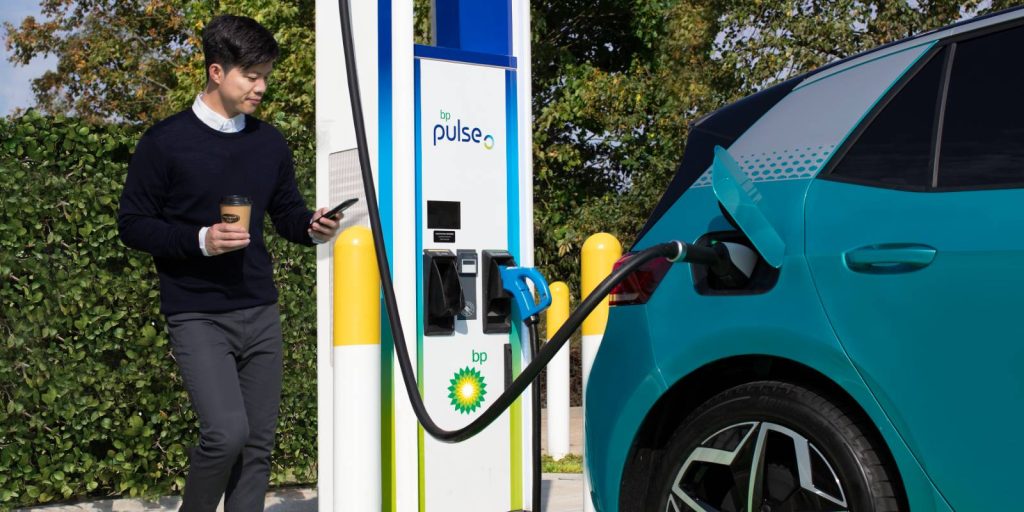
Utilities, state governments, and private developers are racing to roll out faster, more powerful EV chargers. At the same time, automakers and tech giants across the globe are pouring billions into R&D to develop batteries that can take ever-higher levels of power. But what if there’s a better, easier, cheaper, and more effective way to cut emissions?
What if, instead of faster chargers, we pushed for SLOWER gas pumps?
I want to start this conversation by pointing out that there’s a precedent for this idea. Back in 1993, the Environmental Protection Agency (EPA) finalized a rule that limited the rate that gas service stations could pump fuel to a maximum of 10 gallons per minute (gpm), with the stated goals of reducing evaporative emissions and promoting safety by ensuring the integrity of the nation’s refueling infrastructure.
Officially dubbed “61 FR 33033 – Regulation of Fuels and Fuel Additives: Controls Applicable to Gasoline Retailers and Wholesale Purchaser-Consumers; 10 Gallon Per Minute Fuel Dispensing Limit Requirement Implementation,” the rule was finalized in January of 1993 and went into effect in 1996. Now, almost thirty years later, I think it’s time to revisit 61 FR 33033 in a way that helps reduce emissions even more.
To zero.
The pitch

The basic idea is this: instead of “just” asking for utility rate-payers and State or local governments to help cover the costs of rolling out an increasingly huge EV charging infrastructure that will never be big enough to convince the red hats it’s ready, anyway, we focus our lobbying efforts on slower gas pumps in blue states. Like, significantly slower gas pumps.
By reducing the maximum pumping speed from 10 gpm to 3 gpm, we could increase the minimum time to fill up a half-ton Ford F-150’s 36 gallon fuel tank (yes, really) from under four minutes to nearly twelve (12). Factor in the longer wait times ICE-vehicles would have to endure waiting in line to refuel, as well, and we’re talking about a 20-30 minute turnaround time to go from just 10% to a usable 80-or-90% fill.
Y’all see where I’m going with this?
Everybody wins

Way back in 2022, oil giant BP claimed that its BP Pulse electric vehicle chargers were “on the cusp” of being more profitable than its gas pumps. Now, three years and several technological leaps since, BP is investing billions to expand its EV charging infrastructure – and it doesn’t take a genius to realize that they’re expecting a positive ROI.
You don’t have to take my word for that, though. You can take big oil’s. “If I think about a tank of fuel versus a fast charge, we are nearing a place where the business fundamentals on the fast charge are better than they are on the (fossil) fuel,” BP head of customers and products, Emma Delaney, told Reuters.
Those fundamentals revolve around amenities. If you’re popping into a gas station for a three or four minute visit, you’re probably getting in and out as fast as you can. But if you’re there a bit longer? That’s a different story. You might visit the rest room, might buy a snack or order a coffee or suddenly remember you were supposed to pick up milk on your way home, even – and that stuff has a much higher margin for the gas station than the dino-juice, totaling 61.4% of all fuel station profits despite being a fraction of the overall revenue.
The other big winner, of course, is literally everyone. The forgotten costs of fossil fuels cost Americans billions in healthcare bills and environmental clean up each year, and untold trillions of dollars of military spending (to say nothing of the toll on three generations of American blood spilled in the Middle East to secure an affordable supply of oil).
With this plan, ICE-holes and Hemi zealots can continue to have their gas (if they decide it’s worth the wait, so be it). Meanwhile, the well-adjusted normals figure out real quick that it’s better, cheaper, and easier to charge at home.
The rest will take care of itself.
What do you guys think? Does this low-cost, high-impact idea to cut the time delta between refueling your gas car and recharging your EV have legs? What concerns do we need to address before we take it to Gavin and JB? Let us know, in the comments!
Original content from Electrek; featured image by Wikimedia user Coolcaesar, under the Creative Commons Attribution-Share Alike 3.0 Unported license.

If you’re considering going solar, it’s always a good idea to get quotes from a few installers. To make sure you find a trusted, reliable solar installer near you that offers competitive pricing, check out EnergySage, a free service that makes it easy for you to go solar. It has hundreds of pre-vetted solar installers competing for your business, ensuring you get high-quality solutions and save 20-30% compared to going it alone. Plus, it’s free to use, and you won’t get sales calls until you select an installer and share your phone number with them.
Your personalized solar quotes are easy to compare online and you’ll get access to unbiased Energy Advisors to help you every step of the way. Get started here.
FTC: We use income earning auto affiliate links. More.














